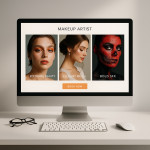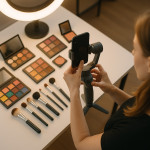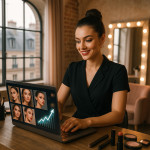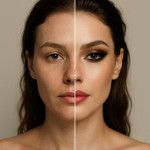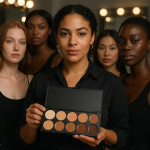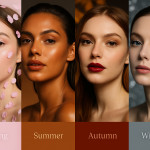Curation tactics: pick 15 standout looks to anchor a maquilleur portfolio 2025
Your makeup portfolio is a silent pitch. In less than 30 seconds recruiters decide whether to book you, shortlist you, or bounce. Curating 15 strategic, high-impact looks keeps decision-makers scrolling and contacting you. This guide breaks down the tactical steps— from choosing themes to sequencing images— so you can build a maquilleur portfolio that converts throughout 2025.
Why exactly 15 looks?
Fifteen is the sweet spot between variety and focus. Below that number, clients wonder if you can handle diverse briefs. Above it, they suffer choice overload. A tight, 15-image gallery balances breadth and depth, giving each look enough space to shine while telling a cohesive story about your signature style.
The psychology of recruiter scanning
- 5–7 seconds for first impression: lighting, colour palette and model diversity must hook them instantly.
- 20–25 seconds for confirmation: recruiters scroll to confirm you can replicate results across different faces and settings.
- 60+ seconds for conversion: detailed captions, BTS reels and proof of range turn curiosity into an enquiry.
Step 1 – Map the five core booking categories
Most maquilleurs receive briefs in five recurring arenas. Select three looks from each category to complete your 15-piece curation.
- Commercial Beauty – campaign-ready, trend-aligned aesthetics.
- Bridal & Private Events – timeless skin work under changing light.
- Editorial & Avant-garde – creative statements that showcase range.
- Stage & Broadcast – pigment intensity adapted to harsh lighting.
- SFX or Character – prosthetics, airbrush or period looks proving technical skill.
Pro tip: rotate a wild card
Swap one image per quarter to reflect seasonal trends or a viral concept. This keeps the gallery fresh without breaking its visual rhythm and supports quarterly refresh cycles described in seasonal update tactics.
Step 2 – Shoot for portfolio, not just the client
Negotiating portfolio usage rights before every job is non-negotiable. Frame it as extra exposure for the brand. Store RAW files safely and schedule time after delivery to perfect versions optimised for web.
Technical specs that matter in 2025
| Element | Spec | Why it boosts bookings |
|---|---|---|
| Resolution | 2,000 px longest side | Sharp on 4K monitors, still fast on mobile. |
| Colour profile | sRGB | Prevents colour shifts across devices. |
| File size | <400 KB JPEG | Maintains loading speed (<2 s target). |
| Alt text | Keyword-rich, descriptive | Improves image SEO and accessibility. |
Step 3 – Curate for narrative flow
Recruiters appreciate storytelling: begin with a hero piece that reflects your primary niche, then alternate between complexity and simplicity to create breathing space. End with a memorable close-up that lingers.
Sample sequencing blueprint
- Signature hero (commercial beauty)
- High-impact editorial colour burst
- Soft bridal glow transition
- SFX scar detail macro
- Studio clean skin – male model
- Runway graphic liner
- Destination bridal look
- Character ageing makeup
- HD television anchor look
- Fashion week backstage capture
- Cinematic period piece
- Festival glitter and UV
- Beauty brand campaign shot
- Live stream–optimised matte look
- Closing macro of flawless complexion
Step 4 – Caption to convert
Each image needs a 30-word caption. Outline the brief, technique and products. Use action verbs and client-focused outcomes (“lasted eight hours under 4K lights”). For deeper guidance see SEO-optimised caption tactics.
Include data
Numbers build trust. Mention “20-minute application time” or “12-hour wear test” where relevant. Quantified claims outperform vague superlatives.
Step 5 – Diversity and inclusion audit
Global brands want maquilleurs who master every skin tone, age and gender expression. Rate your 15 looks on three axes: complexion range, age spectrum and gender presentation. If any axis scores below 3/5, diversify your next test shoot. Learn detailed strategies in inclusive skin-tone best practices.
Step 6 – Add motion for proof of skill
Short reels showing blending or product payoff capture recruiter attention twice as long as stills. Keep clips under 15 seconds and auto-mute them to respect silent browsing. Boost credibility further with behind-the-scenes content explained in BTS reel tactics.
Step 7 – Optimise layout & loading
Select a masonry or three-column grid that adapts to mobile. Eye-tracking studies reveal central columns receive 40 % more attention; place hero and closing shots there. Need help structuring? Review layout ideas from first-impression gallery layouts.
Step 8 – Link your curation to booking funnels
Every image should click through to a short enquiry form or live calendar. Real-time availability tools cut booking friction by 30 %. You can watch how the tactic converts on new makeup artist portfolios already ranking on top directory pages.
Step 9 – Test, track, tweak
Install heat-map analytics and A/B test hero images monthly. If average time on page drops below 45 seconds, refresh one under-performing look. Quarterly audits align with the rotation advice above and keep algorithms happy.
Your 15-look curation checklist
- 3 commercial beauty images, different lighting scenarios
- 3 bridal/event looks covering day, golden hour, night
- 3 editorial/avant-garde statements that reveal creativity
- 3 stage/broadcast high-pigment applications
- 3 SFX or character studies with progressive difficulty
- 30-word captions on each, featuring keywords and outcomes
- Motion reel embedded every third slot
- Optimised file sizes and descriptive alt text
- Inquiry CTA visible above the fold on desktop and mobile
Quick quiz: Is your portfolio curation ready?
FAQ
- Can I mix professional and test-shoot images?
- Yes, if the quality is identical and you have usage rights. Label test shoots discreetly in captions.
- Should I include before/after sliders?
- Use them sparingly. One slider can illustrate transformation; too many slow the page and distract from artistry.
- How often should I update my 15 looks?
- Quarterly. Swap one or two images to reflect new trends or major bookings.
- What keywords help my images rank?
- Combine “makeup artist,” city, technique and finish, e.g., “Paris airbrush matte makeup artist.”
- Do I need watermarks?
- Low-opacity watermarks can deter theft, but avoid large logos that ruin aesthetics.
Next step: launch your curated gallery today
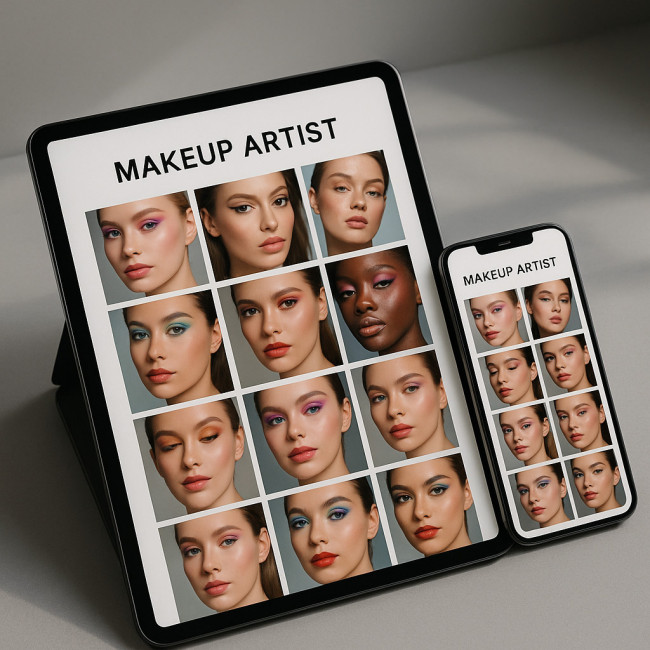
Set aside one weekend to audit existing work, fill any gaps with a micro test shoot, and upload your 15 best looks. Align captions, alt text and CTAs, then promote the refreshed portfolio on social and through directory updates. Ready to convert viewers into paying clients? Start curating now.
Call to action: Need a step-by-step template? Download our free 15-look portfolio planner and schedule your shoot days today.
